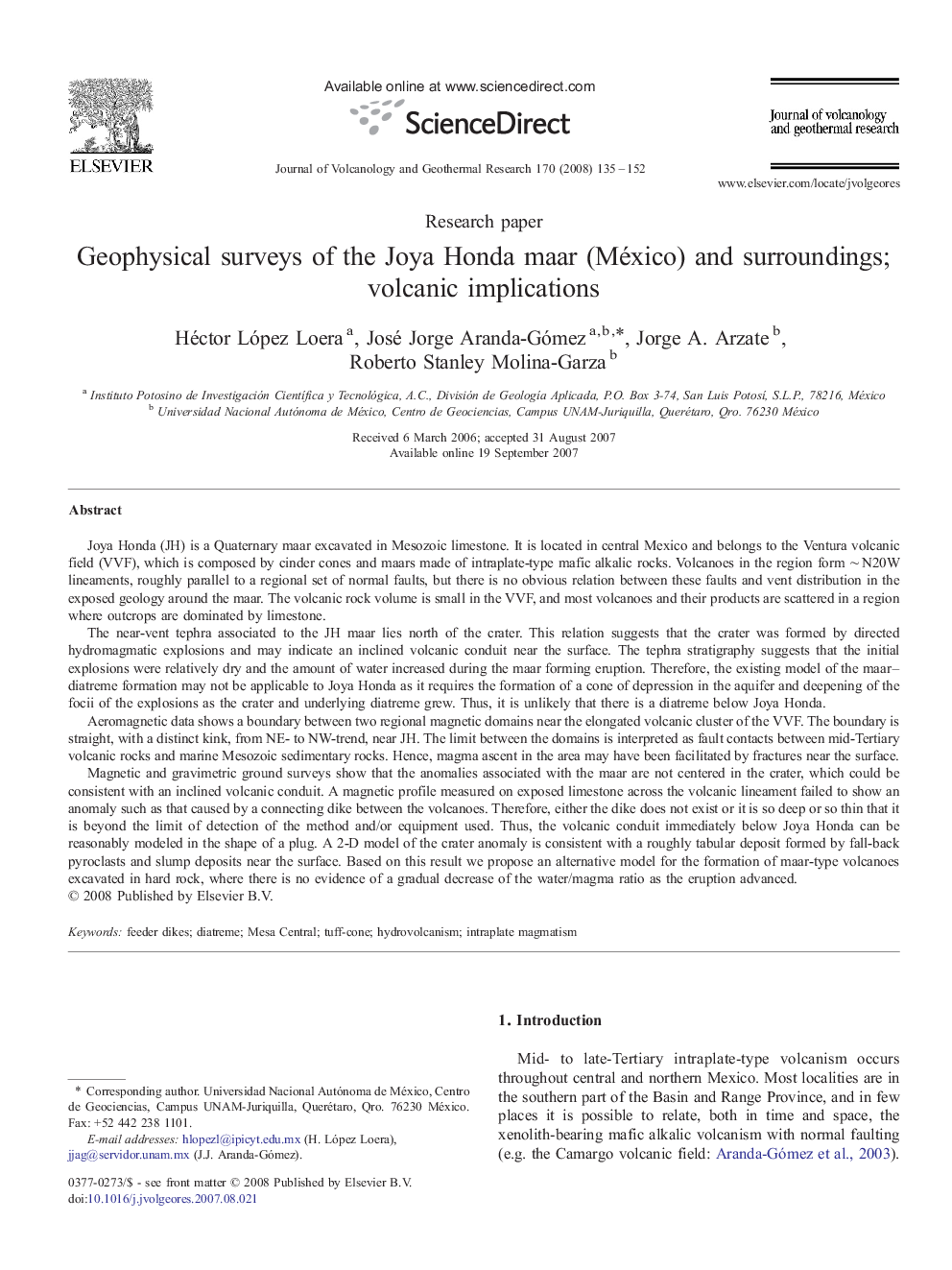| Article ID | Journal | Published Year | Pages | File Type |
|---|---|---|---|---|
| 4714746 | Journal of Volcanology and Geothermal Research | 2008 | 18 Pages |
Joya Honda (JH) is a Quaternary maar excavated in Mesozoic limestone. It is located in central Mexico and belongs to the Ventura volcanic field (VVF), which is composed by cinder cones and maars made of intraplate-type mafic alkalic rocks. Volcanoes in the region form ∼ N20W lineaments, roughly parallel to a regional set of normal faults, but there is no obvious relation between these faults and vent distribution in the exposed geology around the maar. The volcanic rock volume is small in the VVF, and most volcanoes and their products are scattered in a region where outcrops are dominated by limestone.The near-vent tephra associated to the JH maar lies north of the crater. This relation suggests that the crater was formed by directed hydromagmatic explosions and may indicate an inclined volcanic conduit near the surface. The tephra stratigraphy suggests that the initial explosions were relatively dry and the amount of water increased during the maar forming eruption. Therefore, the existing model of the maar–diatreme formation may not be applicable to Joya Honda as it requires the formation of a cone of depression in the aquifer and deepening of the focii of the explosions as the crater and underlying diatreme grew. Thus, it is unlikely that there is a diatreme below Joya Honda.Aeromagnetic data shows a boundary between two regional magnetic domains near the elongated volcanic cluster of the VVF. The boundary is straight, with a distinct kink, from NE- to NW-trend, near JH. The limit between the domains is interpreted as fault contacts between mid-Tertiary volcanic rocks and marine Mesozoic sedimentary rocks. Hence, magma ascent in the area may have been facilitated by fractures near the surface.Magnetic and gravimetric ground surveys show that the anomalies associated with the maar are not centered in the crater, which could be consistent with an inclined volcanic conduit. A magnetic profile measured on exposed limestone across the volcanic lineament failed to show an anomaly such as that caused by a connecting dike between the volcanoes. Therefore, either the dike does not exist or it is so deep or so thin that it is beyond the limit of detection of the method and/or equipment used. Thus, the volcanic conduit immediately below Joya Honda can be reasonably modeled in the shape of a plug. A 2-D model of the crater anomaly is consistent with a roughly tabular deposit formed by fall-back pyroclasts and slump deposits near the surface. Based on this result we propose an alternative model for the formation of maar-type volcanoes excavated in hard rock, where there is no evidence of a gradual decrease of the water/magma ratio as the eruption advanced.
